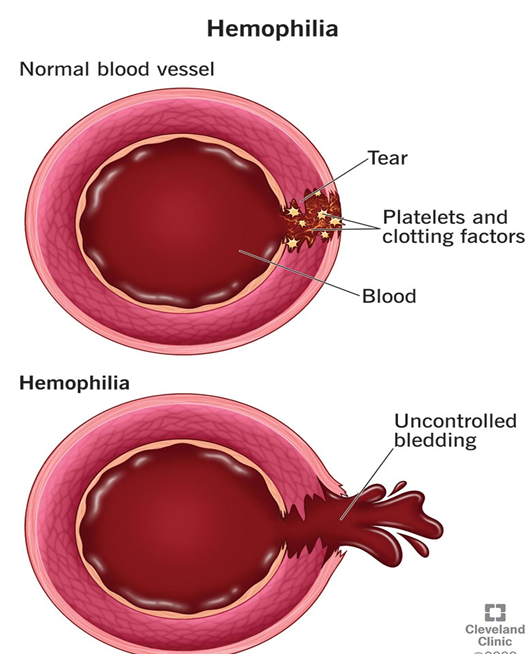A 10-year-old sustained a spider bite on his ankle a week ago and now presents with redness, swelling, and tenderness. He denies any other fall or injury. X-ray of the ankle is unremarkable. CBC shows elevated WBC. What is the most likely diagnosis for this child?
Compartment syndrome
Osteomyelitis
Osteogenesis imperfecta
Juvenile idiopathic arthritis
The Correct Answer is B
Choice A reason:
Compartment syndrome is a condition where increased pressure within a muscle compartment leads to decreased blood flow, which can cause muscle and nerve damage. It is typically associated with severe trauma, fractures, or crush injuries. The symptoms include severe pain, swelling, and decreased sensation or movement in the affected limb. In this case, the child’s symptoms of redness, swelling, and tenderness following a spider bite, along with an elevated WBC, are more indicative of an infection rather than compartment syndrome.
Choice B Reason:
Osteomyelitis is an infection of the bone, which can occur following an injury or infection elsewhere in the body. The symptoms include redness, swelling, tenderness, and pain in the affected area, along with fever and elevated WBC. Given the child’s history of a spider bite and the presence of redness, swelling, tenderness, and elevated WBC, osteomyelitis is the most likely diagnosis. The unremarkable X-ray does not rule out osteomyelitis, as early stages of the infection may not show changes on X-ray.
Choice C Reason:
Osteogenesis imperfecta, also known as brittle bone disease, is a genetic disorder characterized by fragile bones that break easily. It is not associated with infections or elevated WBC. The symptoms of osteogenesis imperfecta include frequent fractures, blue sclerae, and hearing loss. The child’s symptoms of redness, swelling, and tenderness following a spider bite, along with an elevated WBC, are not consistent with osteogenesis imperfecta.
Choice D Reason:
Juvenile idiopathic arthritis (JIA) is a type of arthritis that occurs in children. It is characterized by persistent joint inflammation, pain, and swelling. While JIA can cause joint tenderness and swelling, it is not typically associated with a recent injury or infection, such as a spider bite. Additionally, JIA does not usually cause elevated WBC. The child’s symptoms are more indicative of an infection, making osteomyelitis the more likely diagnosis.
Nursing Test Bank
Naxlex Comprehensive Predictor Exams
Related Questions
Correct Answer is C
Explanation
Choice A reason:
Opioid analgesics are not given as a last resort solely because of the threat of addiction. While the risk of addiction is a concern, opioids are often necessary for managing severe pain, especially in conditions like sickle cell anemia. The American Society of Hematology guidelines emphasize the importance of effective pain management in sickle cell disease, which often includes the use of opioids. The goal is to manage pain effectively while monitoring for signs of misuse or addiction.
Choice B reason:
Opioid analgesics are often ordered and are usually needed for managing severe pain in patients with sickle cell anemia. Pain episodes in sickle cell disease can be extremely severe and debilitating, requiring potent analgesics like morphine for relief. The management of acute vaso-occlusive pain in sickle cell disease often necessitates the use of opioids to provide adequate pain control.
Choice C reason:
Opioid analgesics, when medically indicated and used under proper medical supervision, rarely cause addiction. The risk of addiction is significantly lower when opioids are used appropriately for pain management in a controlled medical setting. The Mayo Clinic highlights that while opioids have addictive properties, their medical use for pain relief, especially in acute settings, is generally safe when monitored by healthcare professionals.
Choice D reason:
Opioid analgesics are not used only if other measures, such as ice packs, are ineffective. While non-pharmacological measures can be part of pain management, opioids are often necessary for managing severe pain episodes in sickle cell disease. The use of opioids is based on the severity of the pain and the clinical judgment of the healthcare provider.
Correct Answer is B
Explanation
Choice A reason:
Basketball, while a popular sport, involves a significant amount of physical contact and the risk of falls and injuries1. For children with hemophilia, engaging in contact sports can increase the risk of bleeding episodes and joint damage. Therefore, basketball is not the most recommended sport for children with hemophilia.
Choice B reason:
Swimming is highly recommended for children with hemophilia because it is a low-impact sport that provides excellent cardiovascular exercise without putting undue stress on the joints. The buoyancy of the water supports the body, reducing the risk of injuries and bleeding episodes. Swimming also helps improve muscle strength and flexibility, which can be beneficial for overall health and well-being.

Choice C reason:
Soccer, like basketball, involves a lot of running, physical contact, and the potential for falls and injuries. These factors make soccer a less suitable sport for children with hemophilia, as it can increase the risk of bleeding and joint damage. Therefore, soccer is not the most recommended sport for children with hemophilia.
Choice D reason:
Skating, whether roller skating or ice skating, carries a risk of falls and injuries. While it can be a fun and enjoyable activity, the potential for accidents makes it less suitable for children with hemophilia. The risk of bleeding episodes and joint damage is higher with activities that involve a significant risk of falls.
Whether you are a student looking to ace your exams or a practicing nurse seeking to enhance your expertise , our nursing education contents will empower you with the confidence and competence to make a difference in the lives of patients and become a respected leader in the healthcare field.
Visit Naxlex, invest in your future and unlock endless possibilities with our unparalleled nursing education contents today
Report Wrong Answer on the Current Question
Do you disagree with the answer? If yes, what is your expected answer? Explain.
Kindly be descriptive with the issue you are facing.
